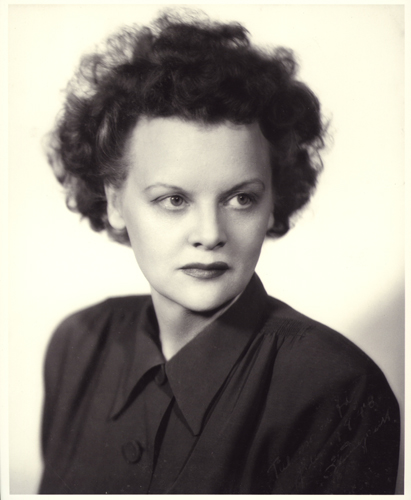Only 1 left
Schedule a video call to learn more about this piece
619-300-3551
An exceptional and increasingly rare example of Greta Magnusson Grossman’s celebrated design for Glenn of California. Crafted in rich walnut, this minimalist coffee table captures the elegant tension between Scandinavian restraint and West Coast modernism that defined Grossman’s most iconic work.
The table’s architectural silhouette features subtly sculpted details—most notably, the softly curved edge of the floating tabletop and angular support stretchers that speak to her keen eye for proportion and materiality. Its low, expansive form invites functionality, while its light visual profile keeps it feeling airy and refined.
A rare find in Grossman’s catalog, this piece is a testament to her pioneering role as one of the few women designing for major California furniture manufacturers in the mid-20th century.
Dimensions: 15.75"H x 65"L x 18" D
Designer: Greta Magnusson Grossman
Manufacturer: Glenn of California
Material: Walnut
Origin: USA, 1950s
Condition: Excellent vintage condition with minor age-appropriate wear. Fully restored and ready for use.

Greta Grossman (1906-1999)
From the 1940s to the 1960s, Greta Grossman was Los Angeles, CA only female architect to own an independent practice. She was a pioneering and award-winning interior designer, industrial designer, and architect who sustained a prolific forty-year career, yet vanished into obscurity by the 1960s.
Born in 1906 in Helsingborg, Sweden, Greta Magnusson received a scholarship to the renowned Swedish art institution Konstfack. She became a critically acclaimed furniture designer and entrepreneur, with her own store and workshop. Her work was exhibited in numerous Swedish museums, and she was the first woman to receive an award for furniture design from the Stockholm Craft Association.
In 1940 she married jazz musician Billy Grossman and moved to the United States. The glamorous couple with great fanfare, with Mrs. Grossman telling the press that all she needed for life in Southern California was “a car and some shorts.”
The couple settled in Los Angeles, where she launched her brand of Swedish Modernism. She opened a hugely successful studio in Beverly Hills, creating interiors for celebrity clientele and designing cutting-edge furniture and lighting, often for major furniture companies. Original Grossman-designed objects are now highly sought after.
From 1949 to 1959, Grossman designed fourteen homes in the Los Angeles area, all based on the Case Study House design principles, but on a smaller scale. Yet it was their construction that revealed Grossman’s architectural acumen. Many of her glass-walled houses stood on problematic hillsides, requiring stilts and other structural solutions. Approximately ten Grossman-designed homes still stand, including the Hurley house, the Frances Nelson houses, and the Jim Backus house, an undersized Modern gem set among stately mansions in Bel-Air.
The mid-twentieth century marked the height of Grossman’s career. She taught at UCLA and at Art Center in Pasadena, was lauded by contemporaries and critics, and received considerable press coverage. Her work was featured regularly in Arts & Architecture magazine.
Grossman undoubtedly helped define California Modernism. Yet in 1966, with no fanfare, she simply departed the world of architecture and design. She retired to a house she built for herself in Encinitas, California and spent the rest of her life painting landscapes until her death in 1999.
After decades in the shadows, Grossman’s work has recently gained the recognition it deserves, with books, exhibitions, and hefty auction prices for original works. Yet her architectural legacy lies in jeopardy, with only a scant handful of examples still remaining.